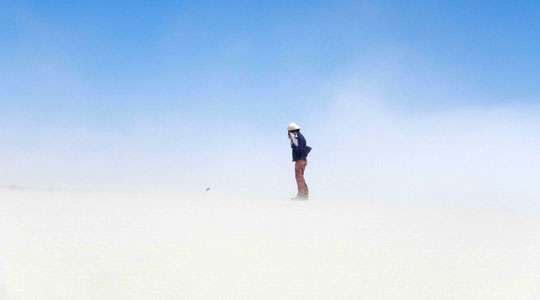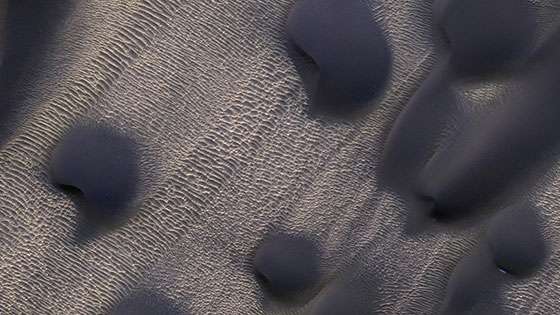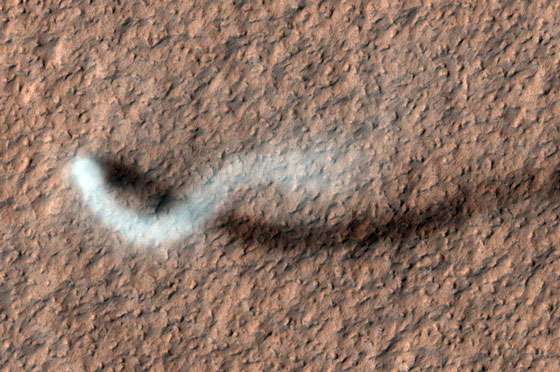Dunes, dust devils and the Martian weather

I study how windblown desert features can be used to monitor wind patterns and atmospheric conditions in remote places, such as Mars, where there are plenty of pictures of the surface but not many instruments on the ground.
These features include sand dunes and ripples, dust devils, and surfaces scoured by sandblasting. I use atmospheric models, remote sensing, and field work at planetary analog sites to figure out how these desert features can be used to learn about, and monitor, changing weather patterns.
Dunes and ripples are windblown piles of sand that align in particular ways, depending on whether a region experiences winds blowing from one, two, or more directions throughout the year. By careful study of the alignment of the dunes and ripples, we can figure out which directions the wind blows, and which winds are the strongest. Wind regimes change as the climate shifts, forcing dunes to reorient – but they take time to do so, so that older wind patterns can often be seen beneath the new ones, like old ink on a palimpsest. By deciphering these old patterns, we can learn something about ancient wind regimes and the climates that produced them.
Dust devils form in deserts where the surface is much hotter than the air above it; their occurrence, size, and movement can tell us about atmospheric conditions where they form. Dust devils loft dust into the atmosphere, which absorbs sunlight and influences atmospheric temperatures. On Earth, mineral dust aerosols are a major driver of climate change, but the role they play is not well understood. On Mars, lofted dust is even more important and even less well understood. With a better understanding of dust devil development and physical characteristics, we can make inferences about local weather conditions in remote places where there are no weather stations.

How does this relate to astrobiology? Thriving ecosystems only form where local climatic conditions are comfortable and stable. Understanding the climate state of exoplanets requires use of climate models, which need as much input data as they can get. The better we can remotely determine the climate patterns on another world, the better we will be able to figure out if they're stable enough to allow life to form and evolve. My work is to improve those models.

Provided by SETI Institute




















